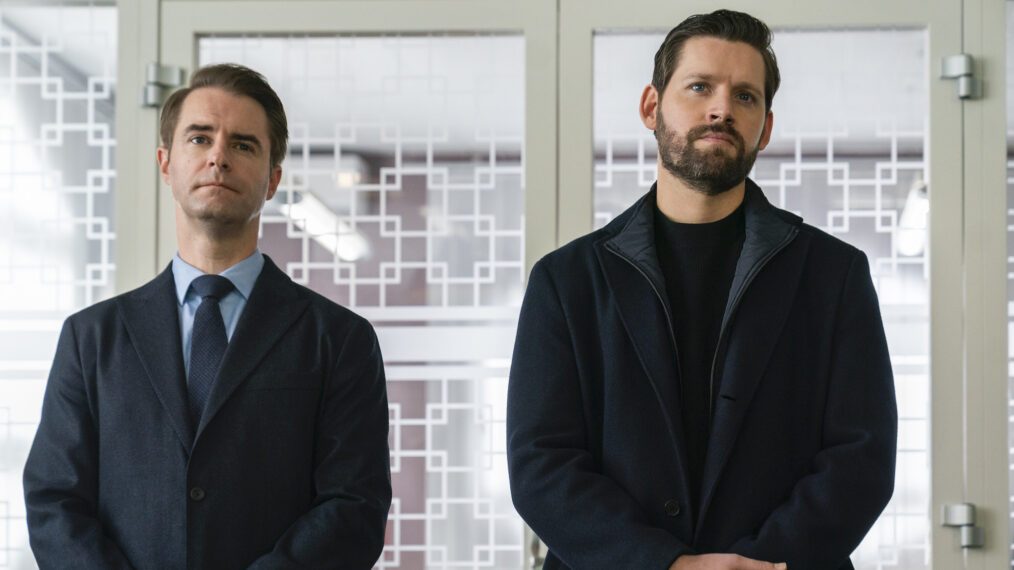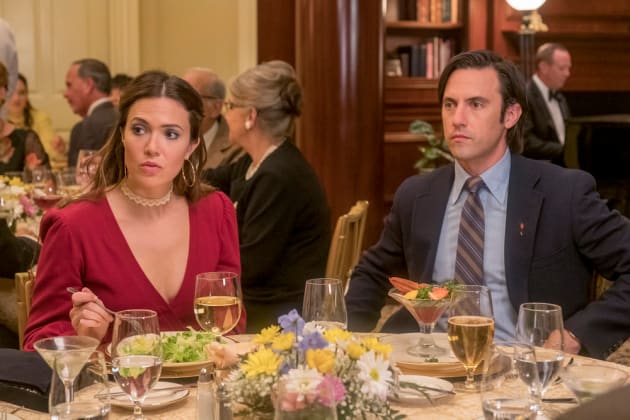Hong Chau did not plan to have such a busy year in 2021. The actress gave birth to her first daughter in November 2020 and was prepared to take the next year off from work — especially as she didn’t expect film and TV production to rebound quickly from the pandemic. But then she got a call from her agent telling her that Darren Aronofsky was interested in seeing an audition from her for his next project. “It was a mixture of emotions,” says Chau. “I thought it was great he was doing another movie, but I really didn’t think I’d be in it.”
But after some gentle nudging from her agent and Aronofsky, Chau submitted a self-tape and landed the role of Liz in A24’s The Whale, in which she plays the best friend and caregiver to Brendan Fraser’s Charlie, a 600-pound man whose grief and depression leads him to binge eat. It’s one of two films out this fall that feature Chau in its ensemble, the second being Searchlight’s , a pitch-black comedy set within the world of fine dining, starring Ralph Fiennes and Anya Taylor-Joy. Chau spoke with THR about preparing for both projects and how she connected with the two wildly different characters.
Had you read or seen Samuel D. Hunter’s play before The Whale came to you?
That’s one of the sad things about living in L.A.: You don’t get to see all of the great theater, especially the off-Broadway shows that don’t travel. The screenplay is so close to the play, and I knew it would require a lot of work. Thankfully, we had a three-week rehearsal period, which energized me in a way I wasn’t expecting. I got to see Brendan really transform from that very first table read to when we started filming. I can’t really explain what the big change was — there was a light in his eyes — but it’s so rare that you get to witness that, and it feels really precious because only four of us got to experience it. I can talk about Brendan Fraser all day. I hadn’t seen a lot of his movies, so I didn’t have any previous attachment to him — I got to meet him as he is. He is a person who’s capable of so much empathy, patience, grace and care.
It sounds like you got to come together as an ensemble as if you were in a stage production.
I think that’s part of the reason I wanted to do the movie. I was genuinely curious what Darren would do with it, because it’s so different from all of his other movies.
Liz is a complicated character. She’s both Charlie’s best friend and caretaker, but at times she’s short-tempered with him and harsh about his health. How did you balance that tone?
They have such a complicated relationship, and there’s so much history there. Liz is also not doing well — she’s just handling it in a different way. She has to show up for work at a hospital, barely hanging on and keeping up this great facade. What was difficult about their relationship is what I found exciting and challenging. I didn’t want her to be the best friend in a very one-dimensional way. There’s a scene where Charlie nearly chokes on his sandwich, and Liz is so upset with him that she hits him. Darren was like, “I don’t know if you want to go in that direction,” but I said, “No — it’s out of love.”
I grew up being spanked as a child for acting out, and it’s not that my parents didn’t love me — it was a knee-jerk reaction. We had to be careful for all of the reasons you have to be sensitive with this story. But I’m glad Darren kept that in the movie, because we’re not backing away from the reality of the situation. It’s very apparent that Liz loves Charlie, so much so that she’s enabling him by bringing him food that isn’t healthy for him. It’s a lot harder to be the friend who sticks around and watches someone who is suffering and isn’t making good choices.

From left: Brendan Fraser, director Darren Aronofsky, Chau, Sadie Sink and screenwriter Samuel D. Hunter at the Venice International Film Festival premiere of The Whale.
Stefania D’Alessandro/WireImage
Speaking of mixed tones, you’re also in The Menu, as dark a comedy as they come, playing the formidable maître d’, Elsa.
I love Succession, and I knew [director] Mark Mylod was a major part of that show. Part of the reason I also wanted to work on The Menu was Ralph Fiennes. Because his character addresses all of the diners in the restaurant, it felt like we were being treated to a one-man show. After he finished the first of his monologues, all of the actors clapped. And again, there was that feeling of being part of a company with some great theater actors like Judith Light, Reed Birney and John Leguizamo.
Elsa couldn’t be more different than Liz in The Whale, although you do have a fight scene!
When I read it, I thought, “I’ve never gotten to do any action. This would be really fun.” And then, on set, I was like, “Oh, Hong, this was a big mistake. Why did you think you wanted to do a knife fight in the kitchen with Anya Taylor-Joy?!” She’s, like, 20 years younger than me and a foot taller. She didn’t just have a baby! They saved that scene for the very last day of shooting, and I think it was so that if anything were to happen to me, they could just roll my body into a ditch. (Laughs.)

Hong Chau in A24’s The Whale.
A24 / Courtesy Everett Collection
Did you approach Elsa differently because of the film’s satirical humor?
Unlike Liz in The Whale, Elsa didn’t have [any big monologues] — she’s there to eavesdrop, guiding the viewer around to the different tables in the restaurant. You don’t know very much about her. Part of the discussion I had with Mark was trying to give some sort of glimpse into who this person is or was outside of the restaurant. I was in Portland [when I read the script] and inspired by all of the cool, funky people I was seeing around. I sent Mark some inspiration photos of how I wanted Elsa to look, in terms of hair and makeup, and I got a very polite “no.” Mark and the writers, Seth Reiss and Will Tracy, were thinking that the character would be very clean and almost blend into the background. I was like, “Why would you hire me to blend into the background?” Thankfully, Amy Westcott, our costume designer, is married to Mark Mylod. She was on my side in terms of not wanting Elsa to look very plain, so she came up with a visually strong costume. It’s almost Victorian. Even though I wasn’t wearing a corset, it made me carry myself in a certain way, stay in character and find the energy I couldn’t find in the script.
Interview edited for length and clarity.
This story first appeared in the Nov. 30 issue of The Hollywood Reporter magazine. Click here to subscribe.
























































